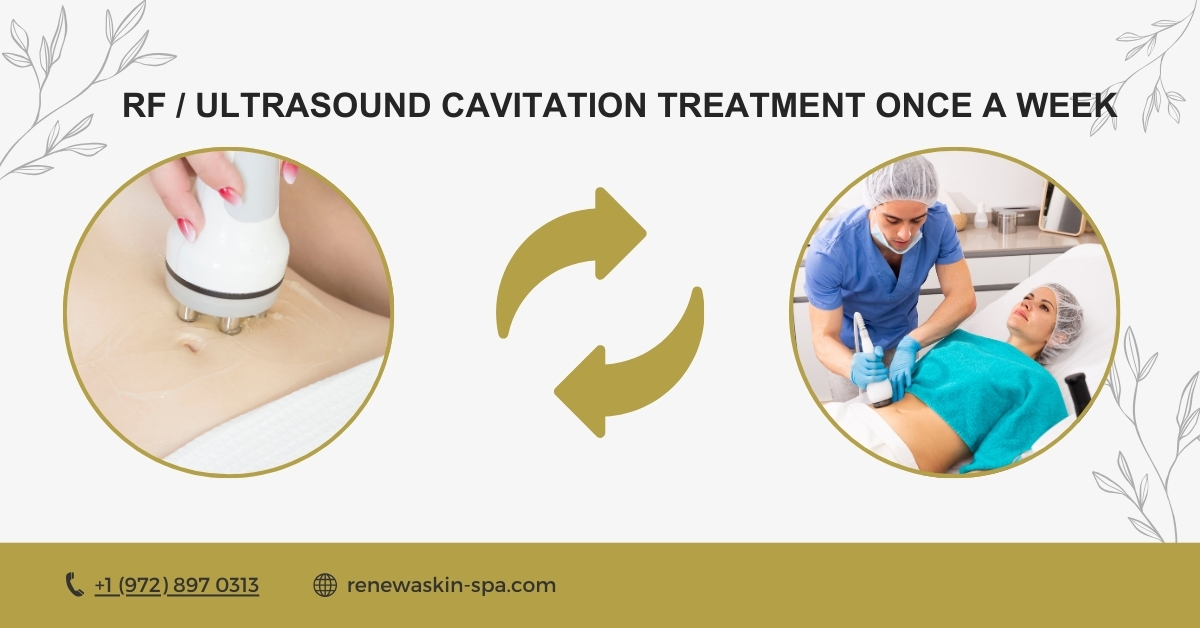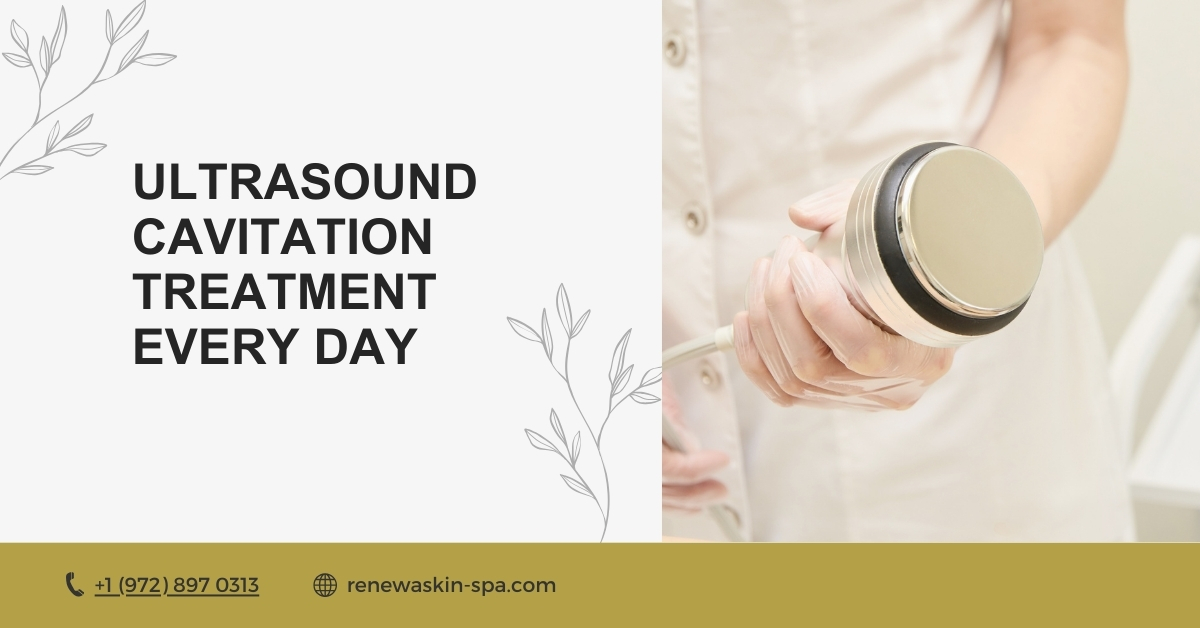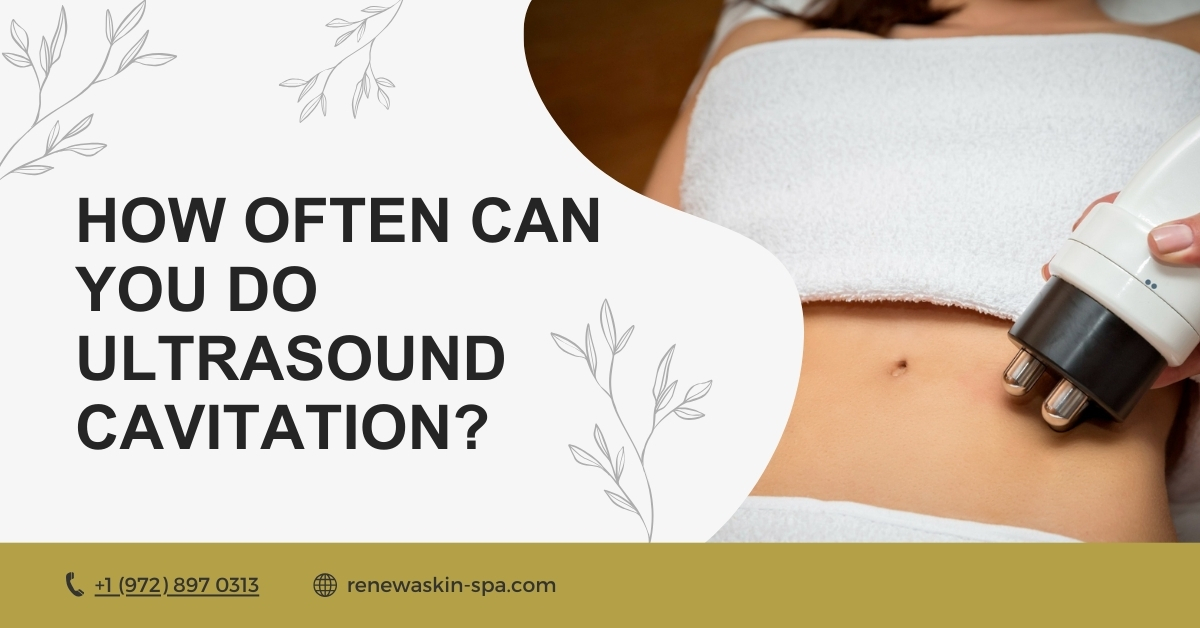Ultrasound cavitation has gained popularity as a non-invasive aesthetic treatment aimed at reducing localized fat and cellulite. This innovative procedure utilizes low-frequency ultrasonic waves to penetrate the skin, effectively breaking down fat cells and promoting the emulsification of fat.
One of the most common questions regarding this treatment is how often one should undergo ultrasound cavitation sessions to achieve optimum results. Understanding the frequency of treatments, as well as the body’s natural recovery process, is essential for anyone considering this procedure for fat reduction.
How Often Should I Have Ultrasound Cavitation Treatment?
The frequency of ultrasound cavitation treatments can significantly affect the overall effectiveness of the procedure. It is generally recommended to undergo one treatment every week for optimal results. This schedule allows the body sufficient time to process and eliminate the broken-down fat cells through the lymphatic system.
Typically, patients may begin to see results after their first treatment, but a series of sessions is usually necessary to achieve the desired reduction in adiposity and contouring of the treatment area. For those with medical conditions or specific health concerns, consulting with a qualified practitioner is crucial to determine the best treatment plan tailored to individual needs.
RF / Ultrasound Cavitation Treatment Once a Week

Experience the benefits of combining ultrasound cavitation and radio frequency treatments once a week for optimal results. Incorporating radiofrequency (RF) technology with ultrasound cavitation can enhance the results of your treatment.
When combining these two methods, it is advisable to maintain a frequency of one session per week. This approach not only aids in breaking down fat deposits but also promotes collagen production, further improving the skin’s elasticity and reducing the appearance of cellulite. Utilizing RF Tighten Skin technology, it effectively targets and reduces stubborn fat deposits, promoting skin firmness and elasticity.
Moreover, regular exercise and a balanced diet complement the effects of cavitation sessions, ensuring that the body can effectively eliminate fatty acids and maintain results over time. Patients who adhere to this regimen often report noticeable improvements in the treated areas, such as the abdomen and buttocks, within a few weeks of consistent treatment.
Cavitation / RF Treatment Three Times a Week
For individuals seeking to maximize the benefits of their ultrasound cavitation and radiofrequency treatments, scheduling sessions three times a week can be effective. This frequency allows for a more aggressive approach to breaking down fat cells and reducing localized fat deposits.
The combination of non-invasive ultrasound cavitation and RF technologies can accelerate the emulsification of fat, leading to quicker results in areas of the body like the abdomen and buttocks.
However, it is essential to monitor how your body responds to this regimen, as adequate recovery time is crucial for the lymphatic system to effectively process the disintegrated fat cells. While some may see results faster with increased frequency, others may experience temporary discomfort or skin sensitivity, necessitating a tailored approach.
Ultrasound Cavitation Treatment Every Day

Although some patients may consider undergoing cavitation treatment every day for rapid results, this approach is generally not recommended. Daily sessions can overwhelm the body’s natural recovery processes and lead to increased downtime. The ultrasound cavitation procedure works best when the body has ample time—typically 72 hours—to eliminate the broken-down fat cells.
Furthermore, while the non-surgical nature of cavitation is appealing, over-treatment may cause skin irritation or fatigue. It is crucial to balance treatment frequency with a healthy lifestyle, including regular exercise and a calorie-controlled diet, to maintain the best results. Consulting with a qualified practitioner before embarking on such an intensive treatment schedule will ensure safety and effectiveness.
How Often Should You Do Ultrasound Cavitation at Home?
When considering ultrasound cavitation at home, the recommended frequency is typically one to two sessions per week. This allows for effective fat reduction without overwhelming the body’s lymphatic system. Home devices can provide a convenient method to complement professional treatments, especially for maintenance. However, users should be aware of the device’s limitations compared to clinical options.
To achieve optimum results, it is vital to follow the manufacturer’s guidelines and maintain a balanced diet alongside regular exercise. The effectiveness of at-home treatments also hinges on consistency; therefore, establishing a routine can help ensure that you see results over time. If there are medical conditions such as a pacemaker or skin sensitivities, it is advisable to consult a healthcare professional before starting any home cavitation regimen.
Ultrasound Cavitation Treatment Once a Month or Less Often

For those opting for a less frequent approach to ultrasound cavitation, scheduling treatments once a month or even less often may still yield some aesthetic benefits. However, it is essential to understand that this interval may not be ideal for optimum results.
While the body does require time to process the broken-down fat cells through the lymphatic system, longer gaps between treatments can significantly delay the emulsification of fat.
During these extended intervals, the potential for fat deposits to reaccumulate exists, especially if the individual does not maintain a balanced diet and regular exercise. Those who choose this schedule should focus on complementary lifestyle changes to boost the treatment’s efficacy, such as engaging in aerobic activities and ensuring proper hydration to support lymphatic function.
Stimulative Cavitation Treatment Every 3-15 Days is Perfect
For individuals seeking a more effective regimen, scheduling ultrasound cavitation treatments every 3 to 15 days strikes a balance between consistent fat reduction and adequate recovery time. This frequency allows the body to effectively break down fat cells while minimizing downtime associated with over-treatment. The integration of low-frequency ultrasonic waves in this timeline fosters a sustained response, enabling the body to continually address localized fat deposits and cellulite.
Furthermore, practitioners often recommend pairing such cavitation sessions with radiofrequency technology to enhance collagen production and improve skin tone. Adopting this approach not only promotes better results in the abdomen and buttocks but also empowers individuals to see visible changes over time, creating a more contoured appearance.
Health Impacts of Ultrasonic Cavitation

Ultrasonic cavitation is a non-invasive procedure that offers several health benefits beyond aesthetic improvements. One significant impact is its ability to stimulate the lymphatic system, which plays a crucial role in detoxification. The process of breaking down fat cells not only aids in reducing localized fat but also facilitates the removal of fatty acids and toxins from the body.
Moreover, patients often report an increase in skin elasticity and a reduction in cellulite, contributing to overall skin health. However, it is essential to approach this treatment with caution, particularly for individuals with medical conditions such as a pacemaker or those who are breastfeeding.
Consulting with a qualified professional is vital to ensure safety and achieve the best results from ultrasonic cavitation. Regular follow-ups can help track progress and make necessary adjustments to the treatment plan.
FAQs
How often can I do cavitation on my stomach?
The frequency of cavitation treatments on your stomach depends on individual goals and body response. Generally, it’s recommended to undergo cavitation sessions once a week.
How often can you do cavitation at home?
The frequency of performing cavitation at home depends on the specific device and your skin type. Generally, it is recommended to do cavitation sessions once or twice a week.
What happens if you do cavitation every day?
Performing cavitation daily could potentially lead to overexposure to ultrasonic waves, which might negatively impact your skin and underlying tissues. Although cavitation is generally considered safe, excessive use might cause irritation or sensitivity.
How long does it take to see results from cavitation?
Generally, most people see changes within 2 to 12 weeks post-treatment. Immediate results might be subtle, with more noticeable effects emerging over time.
How can I maximize the results of my cavitation sessions?
Stay hydrated by drinking plenty of water before and after each session to help your body eliminate toxins. Incorporate a balanced diet and regular exercise to enhance the effects and maintain results longer.


